-
EXECUTIVE SUMMARY
-
MARKET INTRODUCTION
-
DEFINITION
-
SCOPE OF THE STUDY
-
RESEARCH OBJECTIVE
-
MARKET STRUCTURE
-
RESEARCH METHODOLOGY
-
OVERVIEW
-
DATA FLOW
- Data Mining Process
-
PURCHASED DATABASE:
-
SECONDARY SOURCES:
- Secondary Research data flow:
-
PRIMARY RESEARCH:
- Primary Research DATA FLOW:
-
APPROACHES FOR MARKET SIZE ESTIMATION:
- Revenue Analysis Approach
-
DATA FORECASTING
- Data forecasting Type
-
DATA MODELING
- microeconomic factor analysis:
- Data modeling:
-
TEAMS AND ANALYST CONTRIBUTION
-
MARKET DYNAMICS
-
INTRODUCTION
-
DRIVERS
- Rising incidence of road injuries and joint disorders
- Development of biocompatible synthetic bone grafts
- Increase in the demand for dental bone grafts
-
RESTRAINTS
- High cost of surgeries
- Risk and complications from bone grafting procedures
-
OPPORTUNITY
- High investment in orthopedic care sector
- Upsurge in demand for orthopedic procedures among geriatric population
-
MARKET FACTOR ANALYSIS
-
PORTER'S FIVE FORCES MODEL
- Threat of New Entrants
- BARGAINING POWER OF SUPPLIERS
- Threat of Substitutes
- Bargaining Power of Buyers
- Intensity of Rivalry
-
IMPACT OF COVID-19 ON GLOBAL BONE GRAFT SUBSTITUTE MARKET
-
GLOBAL BONE GRAFT SUBSTITUTE MARKET, BY TYPE
-
OVERVIEW
-
ALLOGRAFT
-
BONE GRAFT SUBSTITUTE
-
CELL-BASED MATRICES
-
GLOBAL BONE GRAFT SUBSTITUTE MARKET, BY APPLICATION
-
OVERVIEW
-
SPINAL FUSION
-
JOINT RECONSTRUCTION
-
LONG BONE
-
DENTAL
-
FOOT & ANKLE
-
OTHERS
-
GLOBAL BONE GRAFT SUBSTITUTE MARKET, BY REGION
-
OVERVIEW
-
AMERICAS
- NORTH AMERICA
- Latin America
-
EUROPE
- western europe
- EASTERN EUROPE
-
ASIA-PACIFIC
- china
- india
- japAN
- south korea
- australia
- rest of asia-pacific
-
MIDDLE EAST & AFRICA
- MIDDLE EAST
- africa
-
COMPETITIVE LANDSCAPE
-
INTRODUCTION
-
MARKET SHARE ANALYSIS, 2024
-
COMPETITOR DASHBOARD
-
PUBLIC PLAYERS STOCK SUMMARY
-
COMPARATIVE ANALYSIS: KEY PLAYERS FINANCIAL
-
KEY DEVELOPMENTS & GROWTH STRATEGIES
- PRODUCT LAUNCH
- PRODUCT approval
- partnership
- aquisition
-
COMPANY PROFILES
-
JOHNSON & JOHNSON INC.
- COMPANY OVERVIEW
- FINANCIAL OVERVIEW
- PRODUCTS OFFERed
- KEY DEVELOPMENTS
- SWOT ANALYSIS
- KEY STRATEGIES
-
BAXTER
- COMPANY OVERVIEW
- FINANCIAL OVERVIEW
- productS OFFERED
- KEY DEVELOPMENTS
- SWOT ANALYSIS
- KEY STRATEGIES
-
INTEGRA LIFESCIENCES HOLDINGS CORPORATION
- COMPANY OVERVIEW
- FINANCIAL OVERVIEW
- productS OFFERED
- KEY DEVELOPMENTS
- SWOT ANALYSIS
- KEY STRATEGIES
-
ORTHOFIX MEDICAL INC.
- COMPANY OVERVIEW
- FINANCIAL OVERVIEW
- productS OFFERED
- KEY DEVELOPMENTS
- SWOT ANALYSIS
- KEY STRATEGIES
-
GEISTLICH PHARMA AG
- COMPANY OVERVIEW
- FINANCIAL OVERVIEW
- productS OFFERED
- KEY DEVELOPMENTS
- SWOT ANALYSIS
- KEY STRATEGIES
-
MEDTRONIC
- COMPANY OVERVIEW
- FINANCIAL OVERVIEW
- PRODUCTS OFFERED
- KEY DEVELOPMENTS
- KEY STRATEGIES
-
ALLOSOURCE
- COMPANY OVERVIEW
- FINANCIAL OVERVIEW
- PRODUCTS OFFERED
- KEY DEVELOPMENTS
- KEY STRATEGIES
-
ZIMMER BIOMET
- COMPANY OVERVIEW
- FINANCIAL OVERVIEW
- PRODUCTS OFFERED
- KEY DEVELOPMENTS
- KEY STRATEGIES
-
STRYKER
- COMPANY OVERVIEW
- FINANCIAL OVERVIEW
- productS OFFERED
- KEY DEVELOPMENTS
- KEY STRATEGIES
-
SMITH+NEPHEW
- COMPANY OVERVIEW
- FINANCIAL OVERVIEW
- Products OFFERed
- KEY DEVELOPMENTS
- KEY STRATEGIES
-
BONESUPPORT AB
- COMPANY OVERVIEW
- FINANCIAL OVERVIEW
- PRODUCTS OFFERED
- KEY DEVELOPMENTS
- SWOT ANALYSIS
- KEY STRATEGIES
-
DATA CITATIONS
-
-
LIST OF TABLES
-
QFD MODELING FOR MARKET SHARE ASSESSMENT
-
GLOBAL BONE GRAFT SUBSTITUTE MARKET, BY TYPE, 2019–2035 (USD MILLION)
-
GLOBAL BONE GRAFT SUBSTITUTE MARKET, FOR ALLOGRAFT, BY REGION, 2019–2035 (USD MILLION)
-
GLOBAL BONE GRAFT SUBSTITUTE MARKET, FOR ALLOGRAFT, BY TYPE, 2019–2035 (USD MILLION)
-
GLOBAL BONE GRAFT SUBSTITUTE MARKET, FOR BONE GRAFT SUBSTITUTE, BY REGION, 2019–2035 (USD MILLION)
-
GLOBAL BONE GRAFT SUBSTITUTE MARKET, FOR BONE GRAFT SUBSTITUTE, BY TYPE, 2019–2035 (USD MILLION)
-
GLOBAL BONE GRAFT SUBSTITUTE MARKET, FOR CELL-BASED MATRICES, BY REGION, 2019–2035 (USD MILLION)
-
GLOBAL BONE GRAFT SUBSTITUTE MARKET, BY TYPE, 2019–2035 (USD MILLION)
-
GLOBAL BONE GRAFT SUBSTITUTE MARKET, FOR SPINAL FUSION, BY REGION, 2019–2035 (USD MILLION)
-
GLOBAL BONE GRAFT SUBSTITUTE MARKET, FOR JOINT RECONSTRUCTION, BY REGION, 2019–2035 (USD MILLION)
-
GLOBAL BONE GRAFT SUBSTITUTE MARKET, FOR LONG BONE, BY REGION, 2019–2035 (USD MILLION)
-
GLOBAL BONE GRAFT SUBSTITUTE MARKET, FOR DENTAL, BY REGION, 2019–2035 (USD MILLION)
-
GLOBAL BONE GRAFT SUBSTITUTE MARKET, FOR FOOT & ANKLE, BY REGION, 2019–2035 (USD MILLION)
-
GLOBAL BONE GRAFT SUBSTITUTE MARKET, FOR OTHERS, BY REGION, 2019–2035 (USD MILLION)
-
GLOBAL BONE GRAFT SUBSTITUTE MARKET, BY REGION, 2019–2035 (USD MILLION)
-
NORTH AMERICA BONE GRAFT SUBSTITUTE MARKET, BY COUNTRY, 2019–2035 (USD MILLION)
-
AMERICAS BONE GRAFT SUBSTITUTE MARKET, BY TYPE, 2019–2035 (USD MILLION)
-
AMERICAS BONE GRAFT SUBSTITUTE MARKET, FOR ALLOGRAFT, BY TYPE, 2019–2035 (USD MILLION)
-
AMERICAS BONE GRAFT SUBSTITUTE MARKET, FOR BONE GRAFT SUBSTITUTE, BY TYPE, 2019–2035 (USD MILLION)
-
AMERICAS BONE GRAFT SUBSTITUTE MARKET, BY TYPE, 2019–2035 (USD MILLION)
-
NORTH AMERICA BONE GRAFT SUBSTITUTE MARKET, BY TYPE, 2019–2035 (USD MILLION)
-
NORTH AMERICA BONE GRAFT SUBSTITUTE MARKET, FOR ALLOGRAFT, BY TYPE, 2019–2035 (USD MILLION)
-
NORTH AMERICA BONE GRAFT SUBSTITUTE MARKET, FOR BONE GRAFT SUBSTITUTE, BY TYPE, 2019–2035 (USD MILLION)
-
NORTH AMERICA BONE GRAFT SUBSTITUTE MARKET, BY TYPE, 2019–2035 (USD MILLION)
-
US BONE GRAFT SUBSTITUTE MARKET, BY TYPE, 2019–2035 (USD MILLION)
-
US BONE GRAFT SUBSTITUTE MARKET, FOR ALLOGRAFT, BY TYPE, 2019–2035 (USD MILLION)
-
US BONE GRAFT SUBSTITUTE MARKET, FOR BONE GRAFT SUBSTITUTE, BY TYPE, 2019–2035 (USD MILLION)
-
US BONE GRAFT SUBSTITUTE MARKET, BY TYPE, 2019–2035 (USD MILLION)
-
CANADA BONE GRAFT SUBSTITUTE MARKET, BY TYPE, 2019–2035 (USD MILLION)
-
CANADA BONE GRAFT SUBSTITUTE MARKET, FOR ALLOGRAFT, BY TYPE, 2019–2035 (USD MILLION)
-
CANADA BONE GRAFT SUBSTITUTE MARKET, FOR BONE GRAFT SUBSTITUTE, BY TYPE, 2019–2035 (USD MILLION)
-
CANADA BONE GRAFT SUBSTITUTE MARKET, BY TYPE, 2019–2035 (USD MILLION)
-
LATIN AMERICA BONE GRAFT SUBSTITUTE MARKET, BY TYPE, 2019–2035 (USD MILLION)
-
LATIN AMERICA BONE GRAFT SUBSTITUTE MARKET, FOR ALLOGRAFT, BY TYPE, 2019–2035 (USD MILLION)
-
LATIN AMERICA BONE GRAFT SUBSTITUTE MARKET, FOR BONE GRAFT SUBSTITUTE, BY TYPE, 2019–2035 (USD MILLION)
-
LATIN AMERICA BONE GRAFT SUBSTITUTE MARKET, BY TYPE, 2019–2035 (USD MILLION)
-
EUROPE: BONE GRAFT SUBSTITUTE MARKET, BY COUNTRY, 2019–2035 (USD MILLION)
-
EUROPE: BONE GRAFT SUBSTITUTE MARKET, BY TYPE, 2019–2035 (USD MILLION)
-
EUROPE: BONE GRAFT SUBSTITUTE MARKET, FOR ALLOGRAFT, BY TYPE, 2019–2035 (USD MILLION)
-
EUROPE: BONE GRAFT SUBSTITUTE MARKET, FOR BONE GRAFT SUBSTITUTE, BY TYPE, 2019–2035 (USD MILLION)
-
EUROPE: BONE GRAFT SUBSTITUTE MARKET, BY APPLICATION, 2019–2035 (USD MILLION)
-
WESTERN EUROPE: BONE GRAFT SUBSTITUTE MARKET, BY TYPE, 2019–2035 (USD MILLION)
-
WESTERN EUROPE: BONE GRAFT SUBSTITUTE MARKET, FOR ALLOGRAFT, BY TYPE, 2019–2035 (USD MILLION)
-
WESTERN EUROPE: BONE GRAFT SUBSTITUTE MARKET, FOR BONE GRAFT SUBSTITUTE, BY TYPE, 2019–2035 (USD MILLION)
-
WESTERN EUROPE: BONE GRAFT SUBSTITUTE MARKET, BY APPLICATION, 2019–2035 (USD MILLION)
-
GERMANY: BONE GRAFT SUBSTITUTE MARKET, BY TYPE, 2019–2035 (USD MILLION)
-
GERMANY: BONE GRAFT SUBSTITUTE MARKET, FOR ALLOGRAFT, BY TYPE, 2019–2035 (USD MILLION)
-
GERMANY: BONE GRAFT SUBSTITUTE MARKET, FOR BONE GRAFT SUBSTITUTE, BY TYPE, 2019–2035 (USD MILLION)
-
GERMANY: BONE GRAFT SUBSTITUTE MARKET, BY APPLICATION, 2019–2035 (USD MILLION)
-
FRANCE: BONE GRAFT SUBSTITUTE MARKET, BY TYPE, 2019–2035 (USD MILLION)
-
FRANCE: BONE GRAFT SUBSTITUTE MARKET, FOR ALLOGRAFT, BY TYPE, 2019–2035 (USD MILLION)
-
FRANCE: BONE GRAFT SUBSTITUTE MARKET, FOR BONE GRAFT SUBSTITUTE, BY TYPE, 2019–2035 (USD MILLION)
-
FRANCE: BONE GRAFT SUBSTITUTE MARKET, BY APPLICATION, 2019–2035 (USD MILLION)
-
UK: BONE GRAFT SUBSTITUTE MARKET, BY TYPE, 2019–2035 (USD MILLION)
-
UK: BONE GRAFT SUBSTITUTE MARKET, FOR ALLOGRAFT, BY TYPE, 2019–2035 (USD MILLION)
-
UK: BONE GRAFT SUBSTITUTE MARKET, FOR BONE GRAFT SUBSTITUTE, BY TYPE, 2019–2035 (USD MILLION)
-
UK: BONE GRAFT SUBSTITUTE MARKET, BY APPLICATION, 2019–2035 (USD MILLION)
-
ITALY: BONE GRAFT SUBSTITUTE MARKET, BY TYPE, 2019–2035 (USD MILLION)
-
ITALY: BONE GRAFT SUBSTITUTE MARKET, FOR ALLOGRAFT, BY TYPE, 2019–2035 (USD MILLION)
-
ITALY: BONE GRAFT SUBSTITUTE MARKET, FOR BONE GRAFT SUBSTITUTE, BY TYPE, 2019–2035 (USD MILLION)
-
ITALY: BONE GRAFT SUBSTITUTE MARKET, BY APPLICATION, 2019–2035 (USD MILLION)
-
SPAIN: BONE GRAFT SUBSTITUTE MARKET, BY TYPE, 2019–2035 (USD MILLION)
-
SPAIN: BONE GRAFT SUBSTITUTE MARKET, FOR ALLOGRAFT, BY TYPE, 2019–2035 (USD MILLION)
-
SPAIN: BONE GRAFT SUBSTITUTE MARKET, FOR BONE GRAFT SUBSTITUTE, BY TYPE, 2019–2035 (USD MILLION)
-
SPAIN: BONE GRAFT SUBSTITUTE MARKET, BY APPLICATION, 2019–2035 (USD MILLION)
-
REST OF WESTERN EUROPE: BONE GRAFT SUBSTITUTE MARKET, BY TYPE, 2019–2035 (USD MILLION)
-
REST OF WESTERN EUROPE: BONE GRAFT SUBSTITUTE MARKET, FOR ALLOGRAFT, BY TYPE, 2019–2035 (USD MILLION)
-
REST OF WESTERN EUROPE: BONE GRAFT SUBSTITUTE MARKET, FOR BONE GRAFT SUBSTITUTE, BY TYPE, 2019–2035 (USD MILLION)
-
REST OF WESTERN EUROPE: BONE GRAFT SUBSTITUTE MARKET, BY APPLICATION, 2019–2035 (USD MILLION)
-
EASTERN EUROPE: BONE GRAFT SUBSTITUTE MARKET, BY TYPE, 2019–2035 (USD MILLION)
-
EASTERN EUROPE: BONE GRAFT SUBSTITUTE MARKET, FOR ALLOGRAFT, BY TYPE, 2019–2035 (USD MILLION)
-
EASTERN EUROPE: BONE GRAFT SUBSTITUTE MARKET, FOR BONE GRAFT SUBSTITUTE, BY TYPE, 2019–2035 (USD MILLION)
-
EASTERN EUROPE: BONE GRAFT SUBSTITUTE MARKET, BY APPLICATION, 2019–2035 (USD MILLION)
-
ASIA-PACIFIC: BONE GRAFT SUBSTITUTE MARKET, BY COUNTRY, 2019–2035 (USD MILLION)
-
ASIA-PACIFIC: BONE GRAFT SUBSTITUTE MARKET, BY TYPE, 2019–2035 (USD MILLION)
-
ASIA-PACIFIC: BONE GRAFT SUBSTITUTE MARKET, FOR ALLOGRAFT, BY TYPE, 2019–2035 (USD MILLION)
-
ASIA-PACIFIC: BONE GRAFT SUBSTITUTE MARKET, FOR BONE GRAFT SUBSTITUTE, BY TYPE, 2019–2035 (USD MILLION)
-
ASIA-PACIFIC: BONE GRAFT SUBSTITUTE MARKET, BY APPLICATION, 2019–2035 (USD MILLION)
-
CHINA: BONE GRAFT SUBSTITUTE MARKET, BY TYPE, 2019–2035 (USD MILLION)
-
CHINA: BONE GRAFT SUBSTITUTE MARKET, FOR ALLOGRAFT, BY TYPE, 2019–2035 (USD MILLION)
-
CHINA: BONE GRAFT SUBSTITUTE MARKET, FOR BONE GRAFT SUBSTITUTE, BY TYPE, 2019–2035 (USD MILLION)
-
CHINA: BONE GRAFT SUBSTITUTE MARKET, BY APPLICATION, 2019–2035 (USD MILLION)
-
INDIA: BONE GRAFT SUBSTITUTE MARKET, BY TYPE, 2019–2035 (USD MILLION)
-
INDIA: BONE GRAFT SUBSTITUTE MARKET, FOR ALLOGRAFT, BY TYPE, 2019–2035 (USD MILLION)
-
INDIA: BONE GRAFT SUBSTITUTE MARKET, FOR BONE GRAFT SUBSTITUTE, BY TYPE, 2019–2035 (USD MILLION)
-
INDIA: BONE GRAFT SUBSTITUTE MARKET, BY APPLICATION, 2019–2035 (USD MILLION)
-
JAPAN: BONE GRAFT SUBSTITUTE MARKET, BY TYPE, 2019–2035 (USD MILLION)
-
JAPAN: BONE GRAFT SUBSTITUTE MARKET, FOR ALLOGRAFT, BY TYPE, 2019–2035 (USD MILLION)
-
JAPAN: BONE GRAFT SUBSTITUTE MARKET, FOR BONE GRAFT SUBSTITUTE, BY TYPE, 2019–2035 (USD MILLION)
-
JAPAN: BONE GRAFT SUBSTITUTE MARKET, BY APPLICATION, 2019–2035 (USD MILLION)
-
SOUTH KOREA: BONE GRAFT SUBSTITUTE MARKET, BY TYPE, 2019–2035 (USD MILLION)
-
SOUTH KOREA: BONE GRAFT SUBSTITUTE MARKET, FOR ALLOGRAFT, BY TYPE, 2019–2035 (USD MILLION)
-
SOUTH KOREA: BONE GRAFT SUBSTITUTE MARKET, FOR BONE GRAFT SUBSTITUTE, BY TYPE, 2019–2035 (USD MILLION)
-
SOUTH KOREA: BONE GRAFT SUBSTITUTE MARKET, BY APPLICATION, 2019–2035 (USD MILLION)
-
AUSTRALIA: BONE GRAFT SUBSTITUTE MARKET, BY TYPE, 2019–2035 (USD MILLION)
-
AUSTRALIA: BONE GRAFT SUBSTITUTE MARKET, FOR ALLOGRAFT, BY TYPE, 2019–2035 (USD MILLION)
-
AUSTRALIA: BONE GRAFT SUBSTITUTE MARKET, FOR BONE GRAFT SUBSTITUTE, BY TYPE, 2019–2035 (USD MILLION)
-
AUSTRALIA: BONE GRAFT SUBSTITUTE MARKET, BY APPLICATION, 2019–2035 (USD MILLION)
-
REST OF ASIA-PACIFIC: BONE GRAFT SUBSTITUTE MARKET, BY TYPE, 2019–2035 (USD MILLION)
-
REST OF ASIA-PACIFIC: BONE GRAFT SUBSTITUTE MARKET, FOR ALLOGRAFT, BY TYPE, 2019–2035 (USD MILLION)
-
REST OF ASIA-PACIFIC: BONE GRAFT SUBSTITUTE MARKET, FOR BONE GRAFT SUBSTITUTE, BY TYPE, 2019–2035 (USD MILLION)
-
REST OF ASIA-PACIFIC: BONE GRAFT SUBSTITUTE MARKET, BY APPLICATION, 2019–2035 (USD MILLION)
-
MIDDLE EAST & AFRICA: BONE GRAFT SUBSTITUTE MARKET, BY COUNTRY, 2019–2035 (USD MILLION)
-
MIDDLE EAST & AFRICA: BONE GRAFT SUBSTITUTE MARKET, BY TYPE, 2019–2035 (USD MILLION)
-
MIDDLE EAST & AFRICA: BONE GRAFT SUBSTITUTE MARKET, FOR ALLOGRAFT, BY TYPE, 2019–2035 (USD MILLION)
-
MIDDLE EAST & AFRICA: BONE GRAFT SUBSTITUTE MARKET, FOR BONE GRAFT SUBSTITUTE, BY TYPE, 2019–2035 (USD MILLION)
-
MIDDLE EAST & AFRICA: BONE GRAFT SUBSTITUTE MARKET, BY APPLICATION, 2019–2035 (USD MILLION)
-
MIDDLE EAST: BONE GRAFT SUBSTITUTE MARKET, BY TYPE, 2019&n ash;2035 (USD MILLION)
-
MIDDLE EAST: BONE GRAFT SUBSTITUTE MARKET, FOR ALLOGRAFT, BY TYPE, 2019–2035 (USD MILLION)
-
MIDDLE EAST: BONE GRAFT SUBSTITUTE MARKET, FOR BONE GRAFT SUBSTITUTE, BY TYPE, 2019–2035 (USD MILLION)
-
MIDDLE EAST: BONE GRAFT SUBSTITUTE MARKET, BY APPLICATION, 2019–2035 (USD MILLION)
-
AFRICA: BONE GRAFT SUBSTITUTE MARKET, BY TYPE, 2019–2035 (USD MILLION)
-
AFRICA: BONE GRAFT SUBSTITUTE MARKET, FOR ALLOGRAFT, BY TYPE, 2019–2035 (USD MILLION)
-
AFRICA: BONE GRAFT SUBSTITUTE MARKET, FOR BONE GRAFT SUBSTITUTE, BY TYPE, 2019–2035 (USD MILLION)
-
AFRICA: BONE GRAFT SUBSTITUTE MARKET, BY APPLICATION, 2019–2035 (USD MILLION)
-
PRODUCT LAUNCH
-
PRODUCT APPROVAL
-
PARTNERSHIP
-
AQUISITION
-
JOHNSON & JOHNSON INC.: PRODUCTS OFFERED
-
BAXTER: PRODUCT OFFERED
-
BAXTER: KEY DEVELOPMENTS
-
INTEGRA LIFESCIENCES HOLDINGS CORPORATION: PRODUCT OFFERED
-
ORTHOX MEDICAL INC.: PRODUCT OFFERED
-
ORTHOX MEDICAL INC.: KEY DEVELOPMENTS
-
ORTHOX MEDICAL INC.: PRODUCT OFFERED
-
MEDTRONIC: PRODUCTS OFFERED
-
MEDTRONIC PLC: KEY DEVELOPMENTS
-
ALLOSOURCE: PRODUCTS OFFERED
-
ZIMMER BIOMET: PRODUCTS OFFERED
-
ZIMMER BIOMET: KEY DEVELOPMENTS
-
STRYKER: PRODUCT OFFERED
-
STRYKER: KEY DEVELOPMENTS
-
SMITH+NEPHEW: PRODUCTS OFFERED
-
SMITH+NEPHEW: PRODUCTS OFFERED
-
BONESUPPORT AB: PRODUCTS OFFERED
-
BONESUPPORT AB: PRODUCTS OFFERED
-
-
LIST OF FIGURES
-
GLOBAL BONE GRAFT SUBSTITUTE MARKET: STRUCTURE
-
GLOBAL BONE GRAFT SUBSTITUTE MARKET: MARKET GROWTH FACTOR ANALYSIS (2024-2035)
-
DRIVER IMPACT ANALYSIS (2024-2035)
-
RESTRAINT IMPACT ANALYSIS (2024-2035)
-
PORTER'S FIVE FORCES ANALYSIS: GLOBAL BONE GRAFT SUBSTITUTE MARKET
-
GLOBAL BONE GRAFT SUBSTITUTE MARKET, BY TYPE, 2024 & 2035 (USD MILLION)
-
GLOBAL BONE GRAFT SUBSTITUTE MARKET SHARE (%), BY TYPE, 2024
-
GLOBAL BONE GRAFT SUBSTITUTE MARKET, BY TYPE, 2024 & 2035 (USD MILLION)
-
GLOBAL BONE GRAFT SUBSTITUTE MARKET SHARE (%), BY TYPE, 2024
-
GLOBAL BONE GRAFT SUBSTITUTE MARKET, BY REGION, 2024 & 2035 (USD MILLION)
-
GLOBAL BONE GRAFT SUBSTITUTE MARKET SHARE (%), BY REGION, 2024
-
AMERICAS BONE GRAFT SUBSTITUTE MARKET, BY COUNTRY, 2024 & 2035 (USD MILLION)
-
AMERICAS BONE GRAFT SUBSTITUTE MARKET SHARE (%), BY COUNTRY, 2024
-
EUROPE: BONE GRAFT SUBSTITUTE MARKET SHARE, BY COUNTRY, 2024 (%)
-
ASIA-PACIFIC: BONE GRAFT SUBSTITUTE MARKET SHARE, BY COUNTRY, 2024 (%)
-
MIDDLE EAST & AFRICA: BONE GRAFT SUBSTITUTE MARKET SHARE, BY COUNTRY, 2024 (%)
-
GLOBAL BONE GRAFT SUBSTITUTE MARKET PLAYERS: COMPETITIVE ANALYSIS, 2024
-
COMPETITOR DASHBOARD: GLOBAL BONE GRAFT SUBSTITUTE MARKET
-
JOHNSON & JOHNSON INC.: FINANCIAL OVERVIEW SNAPSHOT
-
JOHNSON & JOHNSON INC.: SWOT ANALYSIS
-
BAXTER: FINANCIAL OVERVIEW SNAPSHOT
-
BAXTER: SWOT ANALYSIS
-
INTEGRA LIFESCIENCES HOLDINGS CORPORATION: FINANCIAL OVERVIEW SNAPSHOT
-
INTEGRA LIFESCIENCES HOLDINGS CORPORATION: SWOT ANALYSIS
-
ORTHOX MEDICAL INC.: FINANCIAL OVERVIEW SNAPSHOT
-
ORTHOX MEDICAL INC.: SWOT ANALYSIS
-
ORTHOX MEDICAL INC.: SWOT ANALYSIS
-
MEDTRONIC: FINANCIAL OVERVIEW SNAPSHOT
-
ZIMMER BIOMET: FINANCIAL OVERVIEW SNAPSHOT
-
STRYKER: FINANCIAL OVERVIEW SNAPSHOT
-
SMITH+NEPHEW: FINANCIAL OVERVIEW SNAPSHOT
-
BONESUPPORT AB: FINANCIAL OVERVIEW SNAPSHOT
-
BONESUPPORT AB: SWOT ANALYSIS
-
"

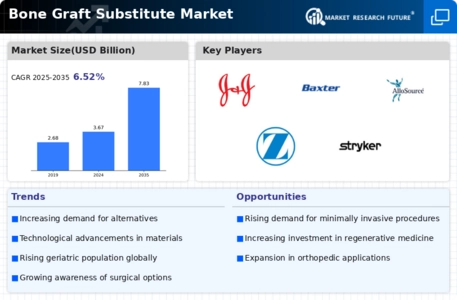
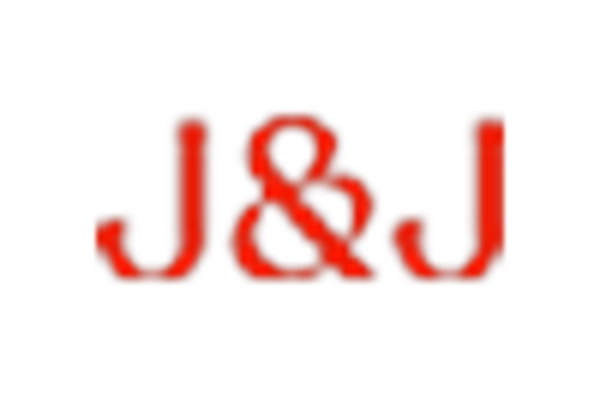
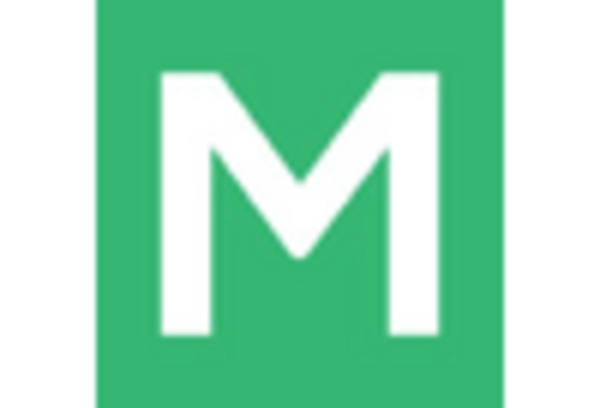

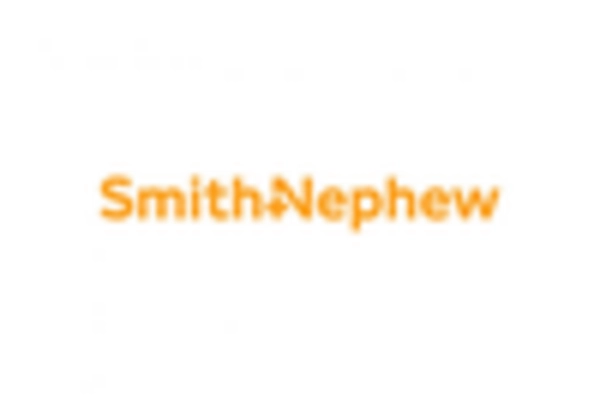
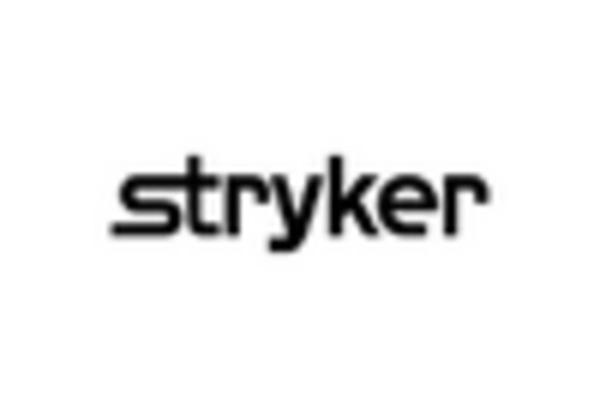
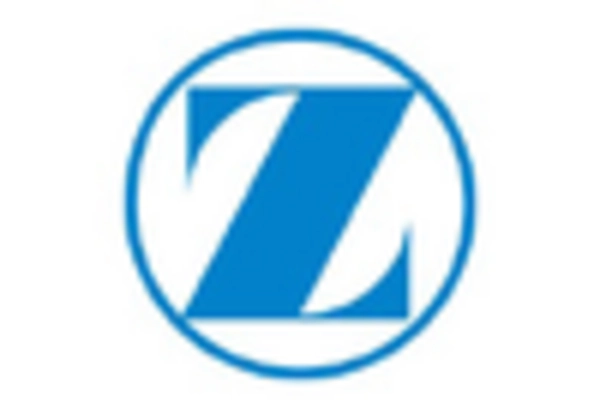









Leave a Comment